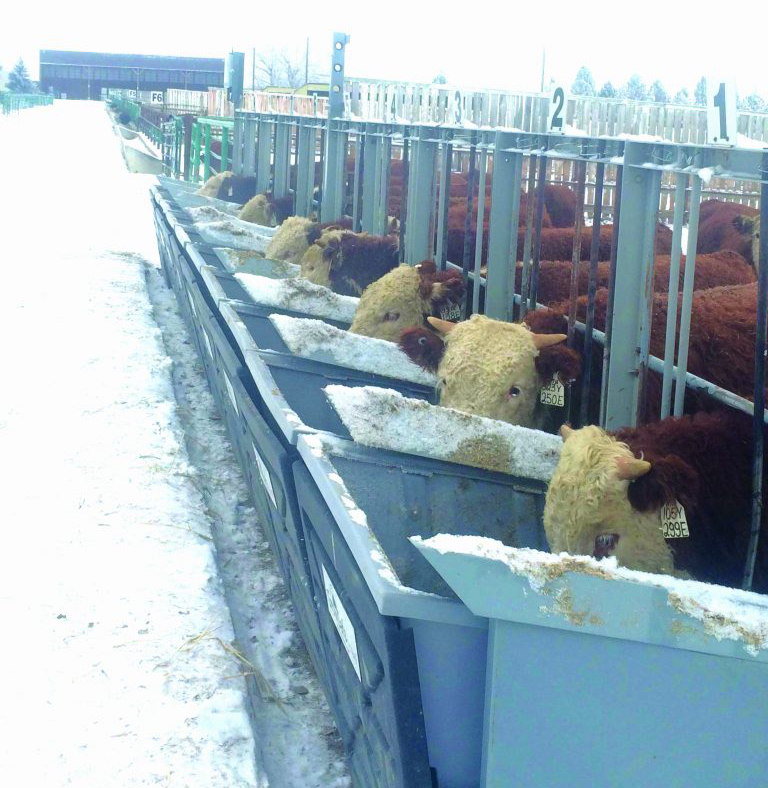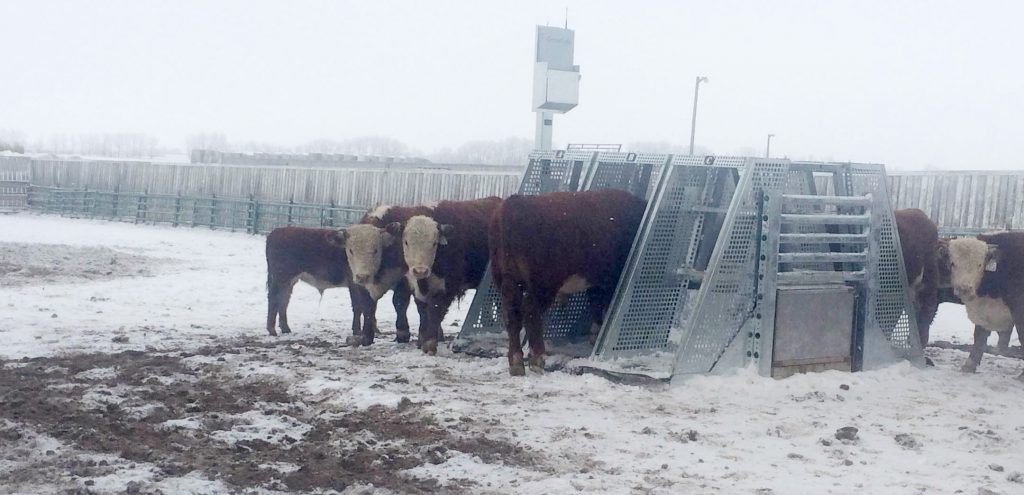History
The RFI research project started as a three – year collaboration between the Canadian Hereford Association (CHA), Olds College, Cattleland Feed Yards, Alberta Agriculture and Rural Development, University of Alberta and Livestock Gentec which was funded through the “Idea to Innovation Program”, Natural Sciences and Engineering Council (NSERC), and cooperating Hereford breeders. Dr. John Basarab, senior research scientist with Alberta Agriculture and Rural Development and adjunct professor at the University of Alberta, a world renowned researcher in the field of feed efficiency was invaluable for his assistance with this project. Running for three years from 2012 to 2015 the CHA assisted researchers in measuring over 1000 Hereford bulls for residual feed efficiency (RFI) resulting in functional RFI EPD’s for nearly 1500 head.
Due to the support and ongoing interest for this project, the CHA continues to test yearling Hereford bulls, collecting measurements and data for RFI and PWG (post weaning gain) EPD’s.
Read More
From 2011 to 2015, the Canadian Hereford Association and its members participated in research evaluating the variation for Residual Feed Intake (RFI) in the Hereford breed. Through the course of six trials, data was collected on over 1,000 animals with the goal of producing EPDs for feed efficiency that can be used by Hereford breeders. The NSERC (Natural Sciences and Research Council)-funded project has now finished. It was competed with the cooperation of the University of Alberta, Olds College and Cattland Feedyards.RFI is a measure of the variation in feed intake that remains after the requirements for maintenance and growth have been met. Efficient animals eat less than expected and have a negative or low RFI, while inefficient animals eat more than expected and have a positive or high RFI. Residual Intake and Gain points to cattle that eat less than expected when considering their rate of gain. RFI has good heritability at 0.36 (36%) and little influence or correlation with other traits. Research has shown that selecting for RFI may result in as much as a 9-10% reduction in cowherd maintenance costs, a 10-12% reduction in feed intake, a 25-30% decrease in methane emissions and a 15-20% decrease in manure production. Bulls enter pens equipped with GrowSafe feeders to complete the 77-day test after a 21-day warm up period. Data collected includes weight, hip height and ultrasound results for backfat thickness, ribeye area and marbling score. After final measurements are taken data is submitted and EPDs generated.Over the six trials, 63 producers provided over 1,000 yearling bulls for testing. Ultimately, phenotypic and genotypic data was collected on 1,031 animals and was used to calculate EBVs and EPDs. With the help of Ellen Crane and Little Fort Herefords we were able to add another 90 animals from BC and the Maritime provinces to the RFI dataset in order to calculate RFI EPDs. These animals were tested privately. A total of 5,655 Hereford pedigrees were included in the data to account for relationships among animals and EPDs were generated for over 4,200 head. Of those, nearly 1,500 received functional EPDs with an accuracy of at least 10% (0.1) with some as high as 44% (0.44) accuracy.Results from the three-year trial showed a 1.73 lb per day difference in feed consumption between the most and least efficient bulls. Using a cost of $0.065/lb of feed, the less efficient bull would cost you $40.04 more each year to feed. Imagine the value of using low RFI sires in your herd to increase you cow herd efficiency? The payback could conceivably be quite substantial.The final stage of the project took place during the summer/early fall of 2015. Researchers at the University of Alberta used the feed intake and growth data as well as the genotypes of all the animals that were on test, to calculate genomically enhanced EPDs. This research has made RFI evaluations more accessible to all breeders. In the future, getting an RFI evaluation could be as easy as submitting a hair sample for analysis.
At the completion of the NSERC Trials, interest in RFI data collection from our breeders remained strong, so the CHA worked with Cattleland Feedyards and Olds College to set up group rates for two additional trials. In 2015/2016 an additional 350 bulls were tested for RFI and received EPD’s. An ALMA (Alberta Livestock and Meat Agency) grant covered HD genotyping for the development of GE-EPD’s.

Looking for more information?
Follow these links:
Feed Efficiency Research for the Beef Cow – Dr Susan Markus
Residual Feed Intake (Net Feed Efficiency) in Beef Cattle
FACTSHEETS
Written by Dr. Susan Markus – ARD and Adjunct Professor, University of Alberta.

